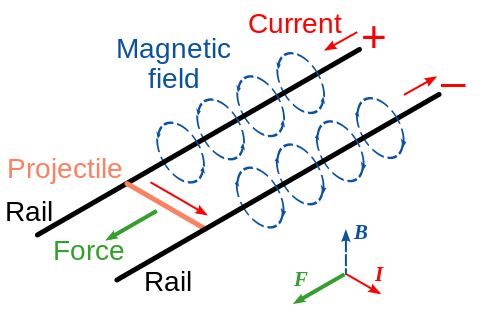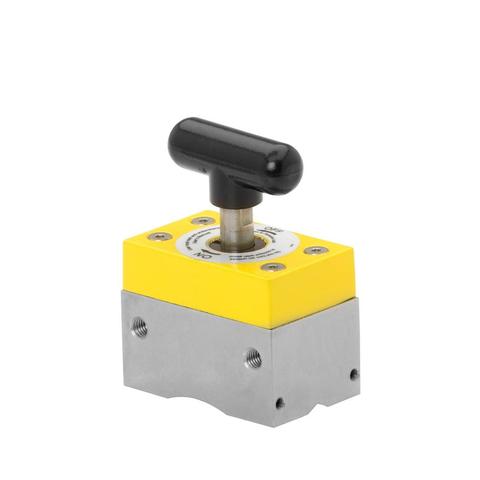Here are the physics of the conventional "railgun" experiment. I suppose it depends on the voltage of the battery and force of the magnets, but most household experiments can power a light projectile a few centimeters. Here is the underlying concept:

This experiment is cool. However, although they are modest in size, they are still relatively complicated in terms of materials. In order to generate the Lorentz force as seen above, one needs a power supply. That means we will also need things like a battery, alligator clips, ect.
I was wondering if, with the help of a certain gadget, could we simplify the design and perhaps improve the strength of the device? The gadget I had in mind is an on/off magnet which is pictured here:
This particular on/off magnet is rated at 150lb of force. I would like to explore the physics behind using an on/off magnet to make a very simple railgun-like device. Let me try to frame this in an answerable question:
Question: If one was to attach some type of tube of the correct diameter to the bottom of the on/off magnet and activated the magnet while an oppositely charged magnet faces it, would that be all you need to have a crude railgun-like experiment? If so, would the force really be 150lbs as per the specs, or is the repulsion force calculated differently?

